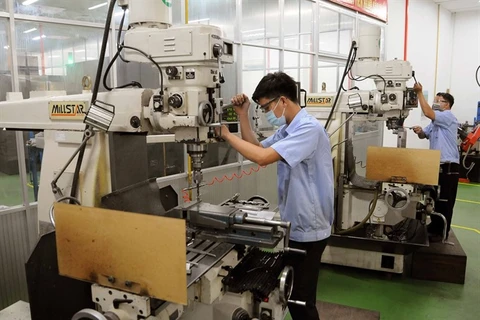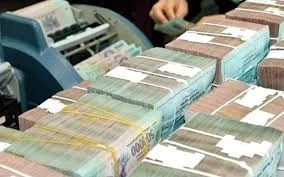 The CPI decreased 0.53 percent in May compared with April, pushing inflation down to 3.19 percent, the lowest since September 2016. (Photo: VNA)
The CPI decreased 0.53 percent in May compared with April, pushing inflation down to 3.19 percent, the lowest since September 2016. (Photo: VNA)Hanoi (VNA) – Market research firm MarketIntello has forecast that Vietnam’s inflation may fall to below 3 percent, lower than the rate of 3.8 percent it predicted last month.
According to the company’s latest macro-economy report, the inflation rate was trending downward because of falling prices of fresh foods as well as oil and petroleum products.
Data from the General Statistics Office show that Consumer Price Index (CPI) decreased 0.53 percent in May compared with April, pushing inflation down to 3.19 percent, the lowest since September 2016.
Price sub-indices of foods and food services plunged to the lowest in 16 years, indicating strong growth in supply and weakening demand. The main reason behind this is a price drop of pork causing by oversupply of pigs and Chinese traders’ move to halt purchases.
The diplomatic crisis between Qatar and other Gulf states has affected the recovery of global crude oil prices, indirectly affecting the Vietnamese government's plan to exploit 1 million tonnes of oil. One of the government’s short-term solutions to support economic growth is to pump out an additional 1 million tonnes of crude oil, MarketIntello Managing Director Dinh Tuan Minh said.
The plan will work out well if crude oil prices rebound, otherwise the extra exploitation will lead to more losses, he added.
The market researcher kept its May projection of 6.1 percent for the country’s economic growth this year.
Due to lower CPI, the interest rate will continue to inch down, but the contraction should not be significant as the credit growth rate is higher than that of deposits. Nevertheless, against the pressure of rising US interest rate, there may be some VND rate hikes from the State Bank of Vietnam (SBV) to protect the exchange rate level.
The exchange rate increased by 0.5 percent this year, lower than the previous forecast of 1.5-2 percent, thanks to Vietnam’s stable trade balance, positive capital account and stronger foreign exchange reserves.-VNA
VNA

























